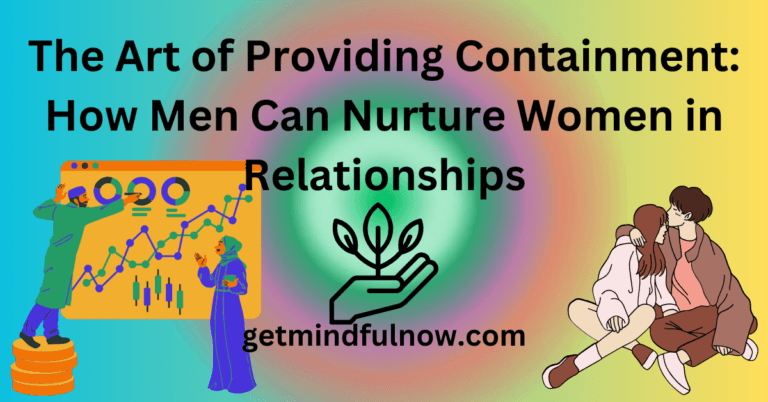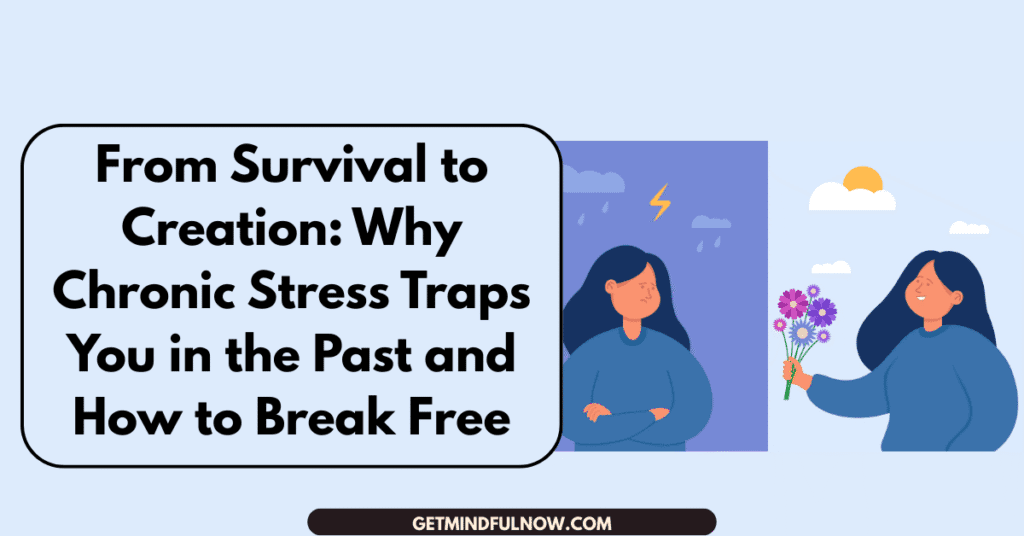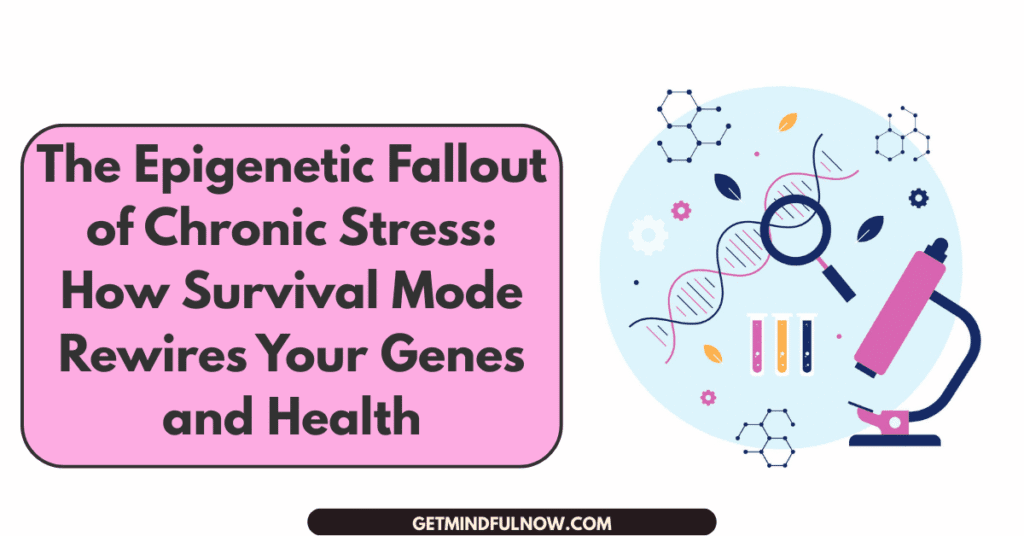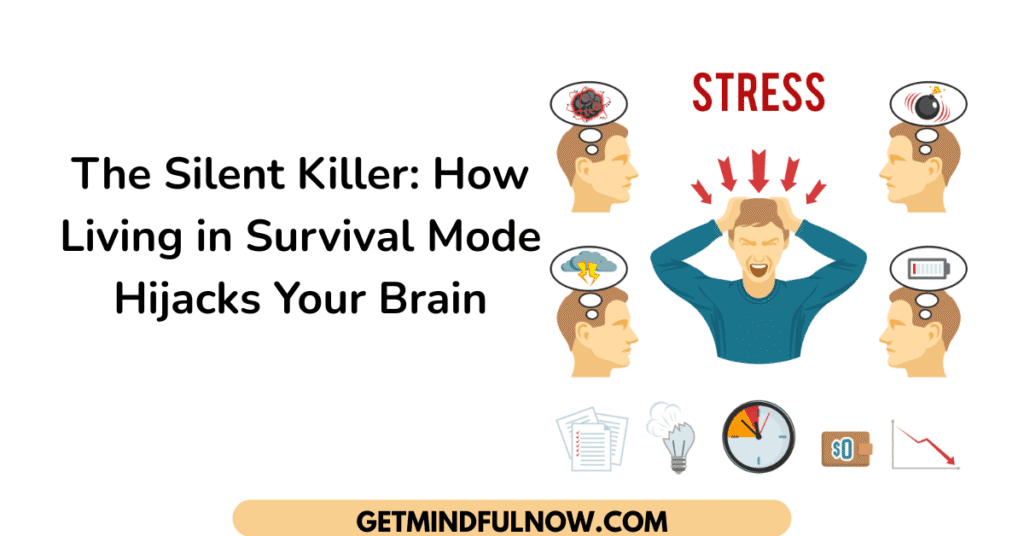Welcome to our guide on how men can provide containment for women in romantic relationships. If you’re looking to deepen your connection with your partner and create a safe, nurturing space for her to thrive, you’re in the right place.
Ah, love – it’s a wild ride, isn’t it? In the realm of romantic relationships, there’s an often-overlooked role that men can play: that of providing containment for their partners.
Let’s kick things off by talking about what exactly we mean by “containment” in the context of romantic relationships. Containment goes beyond just being there for your partner; it’s about creating a safe container/emotional sanctuary where your partner feels emotionally secure, understood, and supported in every way.
So, how exactly can you go about providing containment for the special woman in your life? Let’s break it down. We’ll cover everything from effective communication techniques to fostering a sense of empowerment and equality in your relationship. Whether you’re a seasoned pro or new to the game of love, there’s something here for everyone.
So grab a cup of coffee, get cozy, and let’s dive into the world of containment in romantic relationships.
Understanding Containment: Defining the Invisible Embrace
Alright, let’s dive into what containment really means in the world of romantic relationships. Picture this: you’re in a relationship where you feel like you can fully be yourself, express your deepest thoughts and emotions without fear of judgment, and know that your partner has your back no matter what. That, my friend, is what we call containment.
Containment isn’t just about being physically present for your partner; it’s about creating a safe emotional haven where she feels cherished, understood, and valued. It’s like being her emotional rock, providing stability and support through life’s ups and downs.
Now, why is containment so darn important? Well, think of it like this: when your partner feels contained, she’s more likely to feel secure and confident in the relationship. This, in turn, strengthens your bond and lays the groundwork for a deeper, more fulfilling connection. Plus, who doesn’t want to feel like they’re truly seen and heard by the person they love?
Creating a Safe Emotional Environment
So, how exactly do you go about creating this magical safe space for your partner? It all starts with fostering open, honest communication and a deep sense of trust. Imagine your relationship as a cozy little cocoon where both of you can let your guard down and be your authentic selves without fear of judgment or ridicule.
One way to create this safe emotional environment is by being emotionally available and responsive to your partner’s needs. Listen to her without interrupting or trying to “fix” things right away. Sometimes, all she needs is a listening ear and a shoulder to lean on.
Another key aspect of creating a safe emotional environment is being empathetic and understanding. Put yourself in her shoes, validate her experiences and emotions, and let her know that it’s okay to feel whatever she’s feeling. Remember, empathy is the secret sauce that keeps the wheels of your relationship turning smoothly.
Differences Between Containment and Control
Now, let’s talk about the elephant in the room: the difference between containment and control. While containment is all about nurturing and supporting your partner, control is more about exerting power and dominance over them. Think of containment as giving your partner wings to fly, while control is clipping those wings and keeping them grounded.
In a healthy, balanced relationship, containment thrives on mutual respect, trust, and autonomy. You respect your partner’s boundaries, support their independence, and celebrate their individuality. Control, on the other hand, is rooted in insecurity, jealousy, and a desire to manipulate or dominate your partner’s thoughts and actions.
So, how do you know if you’re providing containment or veering into control territory? Ask yourself: am I fostering a sense of freedom and empowerment in my partner, or am I trying to dictate every aspect of their life? Remember, true love is about lifting each other up, not holding each other down.
This concept of containment deeply resonates with me personally. During half of my childhood, my father’s emotional unavailability instilled dense, fearful feelings within me. I was timid, constantly striving to avoid triggering his anger.
This powerlessness led me to adopt self-reliance as I entered adulthood. I encased myself in armor, believing I had to protect myself.
This journey continued until I entered the sacred institution of marriage, where safety became paramount. Here, I discovered a space where I could truly be myself, free from the fear of harm.
It wasn’t easy; my healing journey brought me here. I had to shed all self-harming beliefs and fully commit to the process.
Alright, now that we’ve got a solid grasp on what containment is all about, let’s move on to the next piece of the puzzle: communication. Get ready to sharpen those listening skills and dive deep into the art of open, honest dialogue.

Communication and Empathy: The Heartbeat of Connection
Alright, folks, buckle up because we’re diving into one of the most crucial aspects of providing containment in your romantic relationship: communication. Yep, you heard that right – good old-fashioned talking and listening. But trust me, there’s a lot more to it than just shooting the breeze.
Importance of Open and Honest Dialogue
Let’s start with the basics: why is open and honest dialogue so darn important in a relationship? Well, think of it like the glue that holds everything together. Without clear communication, misunderstandings can arise, resentments can fester, and before you know it, you’re both left scratching your heads wondering where it all went wrong.
When you make a conscious effort to communicate openly and honestly with your partner, you’re laying the groundwork for trust, understanding, and intimacy to flourish. It’s like laying down a solid foundation for your relationship to stand the test of time.
So, how do you foster open and honest dialogue in your relationship? It all starts with being vulnerable and willing to share your thoughts, feelings, and fears with your partner. Yeah, I know, it can be scary as heck putting yourself out there like that, but trust me, the payoff is oh-so worth it.
Active Listening Techniques
Alright, let’s talk about everyone’s favorite topic: listening. I know, I know, it doesn’t sound as exciting as grand romantic gestures or epic adventures, but trust me, it’s the bread and butter of any healthy relationship.
When I say “active listening,” I’m not just talking about nodding along and pretending to pay attention while you’re actually mentally drafting your grocery list. Nope, I’m talking about fully engaging with your partner, making eye contact, and really taking the time to understand what they’re saying.
One technique you can try is called reflective listening. Basically, you listen to what your partner is saying, then paraphrase it back to them to ensure you’ve understood correctly. It’s like a verbal game of ping-pong, with thoughts and ideas bouncing back and forth until you’re both on the same page.
Avoiding Judgment and Validation of Emotions
Look, I get it – we all have our own opinions and perspectives, and sometimes it can be tempting to jump in with our two cents. But here’s the thing: when your partner opens up to you about something, the last thing they need is a lecture or a critique.
Instead, try to approach the conversation with an open mind and a willingness to see things from their point of view. Even if sometimes you do not agree with them you should at least give them the validation that their emotions are acknowledgable. Remember, it’s not about who’s right or wrong – it’s about supporting each other and working through things together.
Attuning to women’s frequency enables empathy. Men often live with the idea of being in power, so understanding women through their perspective can be detrimental to their relationship.
Through my healing journey, I grasped this concept and began applying it in my own relationships. Whenever I feel fear or powerlessness, my instinct is to share it with my partner.
Women feel powerless in many situations in their lives, not necessarily physical, but emotional and mental as well. To give an honest validation is to understand what women feel and how different their perceptions are.
Empathy and Validation
Let’s talk about two super important ingredients in the recipe for providing containment: empathy and validation. These bad boys can make all the difference in the world when it comes to nurturing a strong, healthy relationship.
The Role of Empathy in Providing Containment
Now, I know what you’re thinking – “Empathy? Isn’t that just a fancy word for feeling sorry for someone?” Well, not exactly. Empathy is all about putting yourself in your partner’s shoes and truly understanding where they’re coming from. It’s about seeing the world through their eyes and acknowledging their experiences, even if you haven’t been through the same thing yourself.
When you approach your partner with empathy, you’re showing them that you care about their feelings and that you’re willing to support them no matter what. It’s like giving them a big ol’ hug for their soul, letting them know that you’re there for them through thick and thin.
Validating Partner’s Experiences and Emotions
Picture this: your partner comes to you, pouring their heart out about something that’s been weighing on their mind. Now, you could respond by brushing off their feelings or telling them they’re overreacting – or you could validate their emotions and let them know that it’s okay to feel the way they do.
Validation is like saying, “Hey, I hear you, and I get it.” It’s about acknowledging your partner’s experiences and emotions without judgment or criticism. Even if you don’t necessarily agree with how they’re feeling, you can still validate their right to feel that way.
Studies Highlighting the Importance of Consideration & Empathy
| Study | Date | Negative Impact on Relationship |
|---|---|---|
| Gottman’s Study on the Influence of Female Partner Acceptance on Relationship Self-Destruction | N/A | When a man was not willing to accept the influence of his female partner, the relationship had an 81% chance of self-destruction. |
| Gottman’s Four Horsemen of the Apocalypse | N/A | Criticism, contempt, defensiveness, and stonewalling lead to the breakdown of communication and relationship satisfaction |
| Fincham & Beach (1999) | 1999 | Lack of validation associated with decreased relationship satisfaction and increased conflict |
| Albracht & Rusbult (1987) | 1987 | Non-consideration of partner’s perspective linked to decreased commitment and increased likelihood of breakup |
| Hirschberger, Ein-Dor & Aloni (2012) | 2012 | Lack of validation associated with lower levels of relationship quality and higher levels of distress |
| Reis, Clark & Holmes (2004) | 2004 | Non-consideration of partner’s feelings and opinions linked to decreased relationship satisfaction |
Building Emotional Connection and Trust
Now, here’s where things get really juicy: building emotional connection and trust. When you approach your partner with empathy and validation, you’re laying the groundwork for a deeper, more intimate connection. You’re showing them that you’re a safe harbor in the stormy seas of life, someone they can rely on to be there for them no matter what.
And let me tell you, folks, there’s nothing quite like the feeling of knowing that you can be your authentic self with your partner, flaws, and all. It’s like having a secret handshake that only the two of you share, a bond that’s unbreakable no matter what life throws your way.
Respecting Boundaries and Autonomy
Importance of Respecting Partner’s Boundaries
I know boundaries can sometimes get a bad rap like they’re some kind of barrier preventing you from getting closer to your partner. But trust me, boundaries are actually the glue that holds your relationship together.
Boundaries are like the guardrails on a highway – they keep you safe and on track, preventing you from veering off into dangerous territory. When you respect your partner’s boundaries, you’re showing them that you value their autonomy and independence.
Avoiding Attempts to “Fix” or Control
Now, here’s where things can get a little tricky: avoiding the temptation to “fix” or control your partner. Look, I get it – when your partner is going through a tough time, your natural instinct might be to swoop in and save the day. But here’s the thing: your partner isn’t some damsel in distress waiting to be rescued.
Instead of trying to control or fix your partner’s problems, try offering them support and encouragement instead. Let them know that you’re there for them if they need you, but also respect their autonomy and trust that they’ll find their own way through whatever they’re facing.
Encouraging Independence and Self-Expression
Last but not least, let’s talk about encouraging independence and self-expression in your partner. Look, folks, nobody wants to feel like they’re living in a gilded cage, trapped by the expectations and demands of their partner.
Instead of trying to mold your partner into your ideal version of who you think they should be, celebrate their individuality and encourage them to be their authentic selves. Trust me, folks, there’s nothing sexier than confidence and self-assurance.
Offering Emotional Support
Being Emotionally Available and Responsive
First things first, let’s talk about being emotionally available and responsive. Now, I know what you’re thinking – “But isn’t that just a fancy way of saying I have to be there for my partner?” Well, yes and no. Being emotionally available means more than just physically being there; it means being fully present and engaged with your partner’s emotional needs.
So, how do you go about being emotionally available? It’s all about being attuned to your partner’s feelings, checking in with them regularly, and making them feel like their emotions matter to you. It’s like being their emotional GPS, guiding them through the twists and turns of life with care and compassion.
Providing Comfort and Reassurance During Difficult Times
let’s talk about providing comfort and reassurance during difficult times. Look, folks, life can be tough sometimes – we all know that. And when your partner is going through a rough patch, they need to know that you’ve got their back no matter what.
So, how do you provide comfort and reassurance? It’s all about being a calming presence in your partner’s life, offering a shoulder to cry on, and letting them know that everything is going to be okay. It’s like wrapping them in a warm, fuzzy blanket of love and support, letting them know that they’re not alone.
Cultivating a Sense of Safety and Security
Last but not least, let’s talk about cultivating a sense of safety and security in your relationship. Now, I’m not just talking about physical safety here – although that’s important too. I’m talking about creating an emotional sanctuary where both you and your partner feel safe to be your authentic selves.
One way to cultivate a sense of safety and security is by creating rituals and routines that reinforce your connection. Whether it’s a weekly date night or a nightly cuddle session before bed, these little rituals can help strengthen your bond and remind you both that you’re in this together.
Emotional Intelligence: Navigating the Seas of Emotion
It helps men connect with their partners by being empathetic and managing emotions well. When men understand their own feelings and those of their partners, they steer their relationships with care, creating a strong bond built on empathy and kindness.
Think of emotional intelligence as the captain of a ship, guiding it safely through rough waters. It’s all about being aware of our emotions and being able to handle them in a healthy way. When guys can do this, they bring stability and understanding to their relationships, making them more loving and supportive of both partners.
Conflict Resolution
Alright, folks, let’s tackle everyone’s favorite topic: conflict resolution. Yep, I know it’s not exactly the most glamorous part of being in a relationship, but trust me, it’s a crucial skill to master if you want your love to go the distance.
Approaching Conflicts Constructively
Look, conflicts are bound to happen in any relationship – it’s just a fact of life. But here’s the thing: it’s not the conflicts themselves that determine the fate of your relationship; it’s how you handle them.
So, how do you approach conflicts constructively? It’s all about staying calm, cool, and collected, even when tensions are running high. Instead of resorting to name-calling or finger-pointing, try to approach the situation with an open mind and a willingness to listen to your partner’s perspective.
Understanding Partner’s Perspective
we all have our own unique set of experiences and beliefs that shape how we see the world. And when conflicts arise, it’s important to take a step back and try to see things from your partner’s point of view.
One technique you can try is called active listening. Basically, you listen to what your partner is saying without interrupting or judging, then paraphrase it back to them to ensure you’ve understood correctly. It’s like a verbal game of ping-pong, with thoughts and ideas bouncing back and forth until you’re both on the same page.
Collaborative Problem-Solving and Compromise
Relationships are all about give and take – it’s just the way it is. And when conflicts arise, it’s important to approach them as a team, working together to find a solution that works for both of you.
So, how do you go about finding a compromise? It’s all about being willing to meet your partner halfway, even if it means stepping outside your comfort zone. Remember, it’s not about who’s right or wrong; it’s about finding a solution that respects both of your needs and desires.
Practicing Emotional Regulation
Emotional regulation is the anchor amidst the tempest of conflict. Cultivate self-awareness, recognizing and managing your own emotions amidst the storm. Practice mindfulness techniques, deep breathing, and grounding exercises to center yourself amidst the turbulence. By remaining calm and composed, you create space for containment to flourish amidst adversity.
Embracing Vulnerability and Repair
Repairing ruptures in containment requires embracing vulnerability and accountability. Apologize sincerely for any words or actions that may have caused hurt or misunderstanding. Express remorse, take responsibility for your part in the conflict, and commit to rebuilding trust and connection. Vulnerability becomes the bridge to restoration, weaving threads of resilience and understanding.
Alright, my friends, there you have it – the lowdown on conflict resolution in romantic relationships. So go ahead, put these principles into practice, and watch your conflicts transform into opportunities for growth and connection.
Empowerment and Encouragement
There’s nothing more fulfilling than watching your partner spread their wings and soar to new heights.
Supporting Partner’s Goals and Passions
We all have dreams and aspirations – it’s what makes life worth living. And as their partner, it’s your job to be their biggest cheerleader, rooting them on every step of the way.
So, how do you go about supporting your partner’s goals and passions? It’s all about showing an interest in what they’re passionate about, asking questions, and offering your unwavering support. Whether they’re training for a marathon or starting their own business, let them know that you believe in them and that you’ll be there to help them chase their dreams.
Encouraging Personal Growth and Development
We’re all a work in progress – constantly evolving and growing as individuals. And as their partner, it’s your job to encourage them to become the best version of themselves.
So, how do you go about encouraging personal growth and development? It’s all about creating an environment where they feel safe to explore new opportunities and take risks. Whether it’s signing up for a class together or embarking on a new adventure, be their partner in crime and support them every step of the way.
Celebrating Achievements and Milestones
Life is full of ups and downs, twists and turns – it’s what makes the journey so darn exciting. And when your partner achieves something amazing, whether it’s big or small, it’s important to celebrate their success and let them know how proud you are of them.
It’s all about taking the time to acknowledge their hard work and dedication, whether it’s with a simple “congratulations” or a big ol’ celebration with friends and family. Remember, folks, every achievement, no matter how small, deserves to be celebrated.

Fostering Respect and Equality
There’s nothing more crucial to the success of your relationship than treating each other with the respect and equality you both deserve.
Building a Relationship Based on Mutual Respect
Respect is the foundation upon which all healthy relationships are built. It’s about treating your partner with kindness, consideration, and dignity, even when you’re knee-deep in the trenches of a heated argument.
It’s all about communication, folks – listening to your partner’s perspective, validating their feelings, and treating them with the same level of respect you’d want for yourself.
Challenging Gender Stereotypes and Expectations
We live in a world where society likes to put people in neat little boxes based on their gender. But here’s the thing: love knows no bounds, and neither should you.
It’s all about being open-minded and willing to challenge the status quo. Whether it’s taking on traditionally “masculine” or “feminine” roles in your relationship or supporting your partner in breaking free from societal expectations, be their partner in crime and stand by their side every step of the way.
Promoting Equality and Partnership
Relationships should be a team effort – a partnership where both parties contribute equally and share in the joys and challenges of life.
It’s all about sharing responsibilities, making decisions together, and supporting each other’s aspirations and goals. Whether it’s divvying up household chores or making major life decisions, approach your relationship as equals and watch it flourish.
Self-Reflection and Growth
This is where you roll up your sleeves and take a good, hard look in the mirror to see where you can improve as a partner.
Examining Personal Attitudes and Behaviors
The journey towards becoming a container starts with looking inward. Men, take a moment to reflect on your attitudes and behaviors in past relationships. Have you been quick to dismiss your partner’s feelings or needs? Have you inadvertently contributed to her feeling unheard or unseen? Being honest with yourself is the first step towards positive change.
Recognizing and addressing biases
We all carry biases, whether conscious or unconscious, that influence how we interact with others. It’s essential for men to recognize any biases they may hold about women – stereotypes, societal expectations, etc. – and actively work to challenge and dismantle them. Remember, every woman is unique, deserving of respect, and worthy of being treated as an equal partner.
Commitment to continuous improvement in the relationship
Rome wasn’t built in a day, and neither are healthy relationships. It takes ongoing effort and communication to foster a sense of containment. Look, folks, relationships are like gardens – they require constant care and attention to thrive. And that means being willing to roll up your sleeves and put in the work, even when times get tough.
So, how do you go about committing to continuous improvement in your relationship? It’s all about being proactive and intentional in your efforts to strengthen your bond with your partner. Whether it’s setting aside time each week to check in with each other or seeking out resources and support to help you grow as a couple, make it a priority to invest in your relationship every single day.
Commit to show up for your partner every day, listen with an open heart, and respond with empathy and kindness. Be willing to learn from your mistakes and adapt your behavior accordingly.
Practical Application
Let’s bring this concept of containment to life with a hypothetical scenario. Imagine your partner comes home from a tough day at work, visibly upset. Instead of brushing off her emotions or trying to fix the problem, you sit down with her, offer a listening ear, and validate her feelings. You might say something like, “I’m here for you, and I understand how hard this must be. You’re not alone, and we’ll get through this together.” By providing containment in this moment, you’re strengthening the bond of trust and intimacy in your relationship.
Self-Care and Boundaries
Handling disagreements and fixing cracks in relationships are important for keeping bonds strong. When conflicts arise, it’s crucial for both partners to talk openly and really listen to each other without judging. It’s not about proving who’s right but understanding each other’s feelings and finding common ground even when there are differences.
One way to deal with conflicts is by managing emotions. This means recognizing when things are getting heated and taking a break to cool down before things escalate. Giving each other space to calm down helps keep arguments from getting out of hand and makes it easier to talk things through calmly later on.
Repairing relationships after conflicts means being humble and open about mistakes. It’s about saying sorry genuinely, acknowledging the hurt caused, and working to make things better. By seeing conflicts as chances to grow and understand each other better, couples can build stronger, more resilient bonds that last through tough times.
Understanding Attachment Styles
Attachment theory offers valuable insights into the dynamics of containment within relationships. It suggests that the early bonds formed between individuals and their caregivers shape their attachment styles, which in turn influence how they give and receive containment.
There are four main attachment styles: secure, anxious-preoccupied, dismissive-avoidant, and fearful-avoidant.
Individuals with a secure attachment style tend to feel comfortable with intimacy and are confident in their relationships. They can provide containment effectively because they feel secure in themselves and their connections with others.
Conversely, those with anxious-preoccupied attachment styles may crave more containment due to underlying fears of abandonment or rejection. They may seek reassurance and validation from their partners to feel secure.
Similarly, individuals with dismissive-avoidant or fearful-avoidant attachment styles may struggle to provide or receive containment. They may have difficulty trusting others and expressing vulnerability, which can hinder the development of supportive relationships.
Understanding these attachment styles can deepen our understanding of how containment operates in relationships and inform strategies for fostering healthier dynamics. By recognizing and addressing attachment-related insecurities, individuals can cultivate secure emotional connections that support mutual trust, understanding, and containment in their relationships.
Intersectionality of Identities
The interplay of different aspects of a person’s identity adds layers of complexity to how emotional support and understanding are experienced in relationships. Factors like race, ethnicity, socioeconomic status, and disability all influence how individuals give and receive containment within relationships.
For instance, individuals from marginalized racial or ethnic backgrounds may encounter specific hurdles in accessing support due to systemic inequalities and cultural differences.
Socioeconomic status also matters in how containment operates within relationships. Those from lower socioeconomic backgrounds might face obstacles in accessing resources and support systems, which affects their ability to provide and receive containment. Economic stress and disparities in access to healthcare and mental health services play a role in shaping the dynamics of support in relationships.
Moreover, disability presents its own set of challenges when it comes to containment in relationships. Individuals with disabilities may struggle to access support and understanding due to physical, cognitive, or sensory limitations. Issues like accessibility and societal stigma can affect how containment is expressed and received.
It’s essential for relationships to be inclusive and accommodating to honor everyone’s diverse needs and experiences. By recognizing and respecting the complexities of intersecting identities, couples can create environments that promote empathy, mutual respect, and inclusivity. Embracing diversity enriches relationships, fostering deeper understanding and connection across various backgrounds.
Conclusion
Containment in romantic relationships is about creating a safe emotional space where partners can be vulnerable and authentic without fear of judgment. It involves self-reflection, empathy, and a commitment to growth.
The journey towards becoming a container for your partner is a noble one. It requires humility, patience, and a willingness to step outside of your comfort zone. But the rewards – deeper connection, greater intimacy, and a love that withstands the test of time – are more than worth it.
So, let’s challenge ourselves to be better partners, to show up for our loved ones in meaningful ways, and to nurture the kind of love that enriches our lives and the lives of those we hold dear. Together, we can create relationships that are not only strong but truly thrive.








